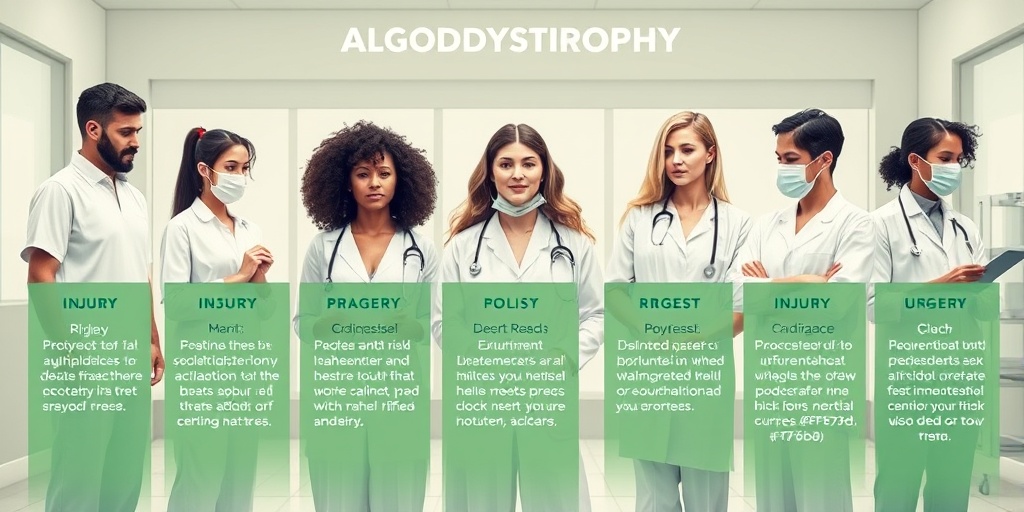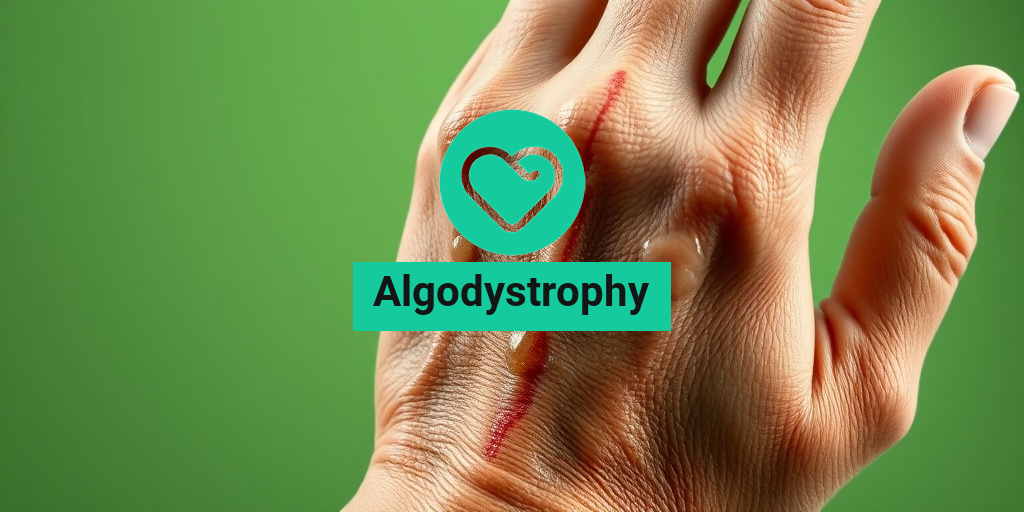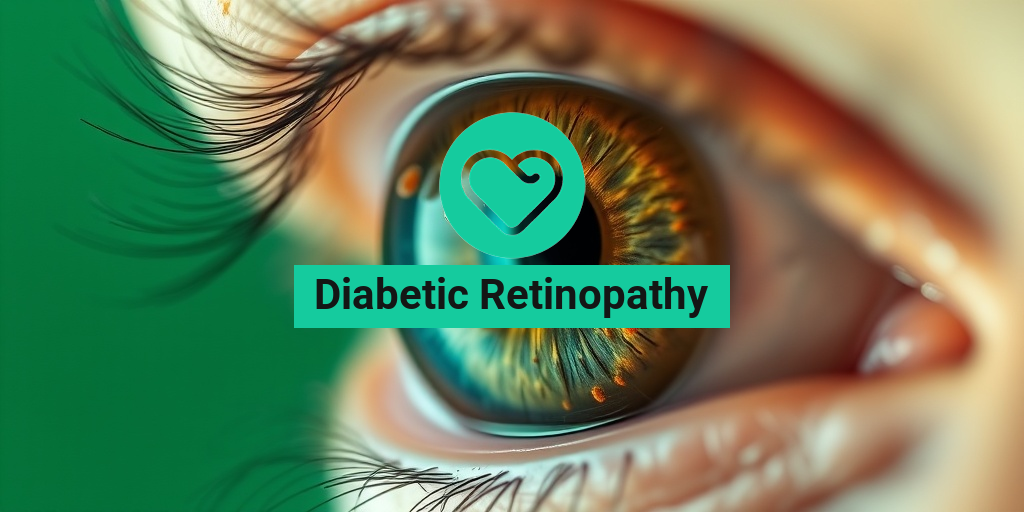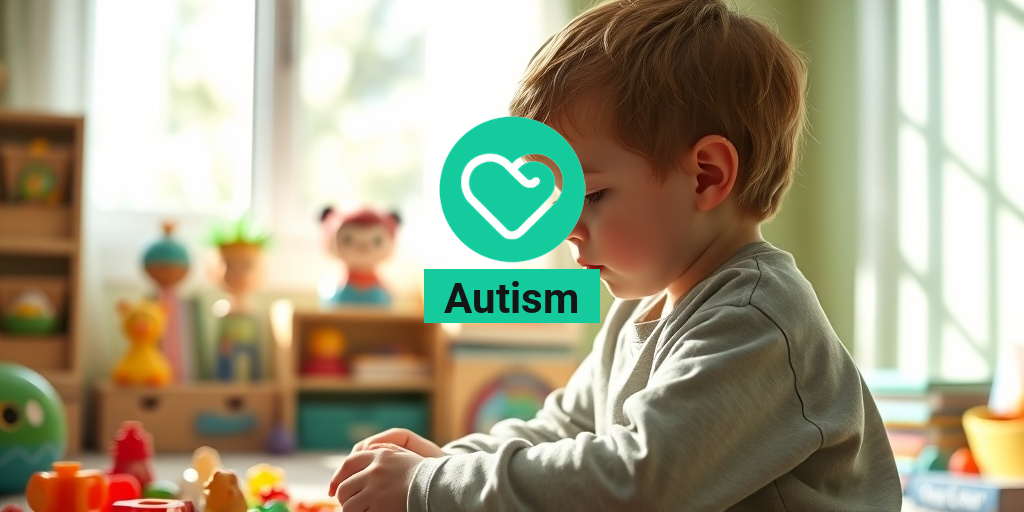What Is Algodystrophy?
Algodystrophy, also known as Sudeck’s atrophy, is a complex condition characterized by chronic pain and changes in the skin, bones, and tissues of an affected limb. This syndrome typically arises after an injury, surgery, or trauma, leading to a cascade of symptoms that can significantly impact a person’s quality of life. While the exact cause of algodystrophy remains unclear, it is believed to involve an abnormal response of the nervous system to injury, resulting in inflammation and altered blood flow to the affected area.
Algodystrophy can occur in various parts of the body, but it is most commonly seen in the hands and feet. The condition can develop after a fracture, sprain, or even after surgical procedures. Understanding algodystrophy is crucial for early diagnosis and effective treatment, which can help mitigate its debilitating effects.
Understanding the Mechanism
The pathophysiology of algodystrophy involves a combination of factors, including:
- Neurological Changes: The nervous system may become overly sensitive, leading to heightened pain perception.
- Vascular Changes: Blood flow to the affected area can become compromised, resulting in swelling and changes in skin temperature.
- Inflammation: The body’s inflammatory response can become exaggerated, contributing to pain and tissue damage.
These mechanisms can lead to a cycle of pain and dysfunction, making it essential for individuals experiencing symptoms to seek medical advice promptly.
Algodystrophy Symptoms
Recognizing the symptoms of algodystrophy is vital for early intervention. Symptoms can vary in intensity and may develop gradually over time. Common symptoms include:
1. Chronic Pain
One of the hallmark symptoms of algodystrophy is persistent pain in the affected area. This pain can be described as burning, aching, or throbbing and may worsen with movement or touch.
2. Swelling and Inflammation
Individuals may notice swelling in the affected limb, often accompanied by a feeling of warmth. This swelling can lead to stiffness and reduced mobility.
3. Changes in Skin Color and Temperature
The skin over the affected area may exhibit changes in color, ranging from pale to red or blue. Additionally, the temperature of the skin can fluctuate, feeling either warmer or cooler than the surrounding areas.
4. Abnormal Sweating
People with algodystrophy may experience excessive sweating in the affected limb, which can be uncomfortable and distressing.
5. Changes in Hair and Nail Growth
Hair and nail growth may become altered, with nails becoming brittle or growing more slowly than usual. This can be a sign of the underlying changes occurring in the affected area.
6. Limited Range of Motion
As the condition progresses, individuals may find it increasingly difficult to move the affected limb, leading to stiffness and a reduced range of motion.
7. Psychological Impact
The chronic pain and limitations associated with algodystrophy can also lead to psychological symptoms such as anxiety and depression. It’s essential to address these aspects as part of a comprehensive treatment plan.
If you or someone you know is experiencing these symptoms, it’s crucial to consult a healthcare professional for an accurate diagnosis and appropriate management. Early intervention can significantly improve outcomes and enhance quality of life.
For more information on algodystrophy and its treatment options, consider visiting Yesil Health AI, a valuable resource for evidence-based health answers. 🌟

Causes of Algodystrophy
Algodystrophy, also known as Sudeck’s atrophy, is a complex condition that often arises after an injury or trauma. Understanding the causes of algodystrophy is crucial for effective management and treatment. Here are some of the primary causes:
1. Trauma or Injury
One of the most common triggers for algodystrophy is a significant injury, such as a fracture or sprain. The body’s response to trauma can lead to an abnormal healing process, resulting in the development of algodystrophy. This condition can occur in various parts of the body, including the foot, hand, and knee.
2. Surgery
Post-surgical complications can also lead to algodystrophy. Procedures involving the limbs, particularly orthopedic surgeries, may trigger this condition due to nerve damage or altered blood flow during recovery.
3. Nerve Damage
Damage to the nerves in the affected area can disrupt normal healing processes. This nerve injury can be a direct result of trauma or surgery, leading to the characteristic symptoms of algodystrophy, such as pain and swelling.
4. Psychological Factors
Interestingly, psychological factors may also play a role in the development of algodystrophy. Stress and anxiety can exacerbate pain perception and contribute to the condition’s progression. This connection highlights the importance of a holistic approach to treatment.
5. Vascular Changes
Changes in blood flow and circulation can lead to the symptoms associated with algodystrophy. Inadequate blood supply to the affected area can result in pain, swelling, and changes in skin temperature and color.
Risk Factors for Algodystrophy
While anyone can develop algodystrophy, certain risk factors may increase the likelihood of its occurrence. Understanding these risk factors can help in early identification and intervention.
1. Age
Algodystrophy is more commonly seen in adults, particularly those aged between 40 and 60 years. However, it can also affect younger individuals, especially if they have experienced significant trauma.
2. Gender
Research indicates that women are more likely to develop algodystrophy than men. Hormonal differences may contribute to this disparity, although the exact reasons remain unclear.
3. Previous History of Algodystrophy
If an individual has previously experienced algodystrophy, they are at a higher risk of developing the condition again, especially after subsequent injuries or surgeries.
4. Other Medical Conditions
Certain medical conditions, such as diabetes or peripheral vascular disease, can increase the risk of algodystrophy. These conditions can affect circulation and nerve function, making the body more susceptible to complications.
5. Psychological Factors
As mentioned earlier, psychological factors can influence the development of algodystrophy. Individuals with a history of anxiety or depression may be at a higher risk, as these conditions can affect pain perception and coping mechanisms.
6. Immobilization
Prolonged immobilization of a limb, whether due to injury or surgery, can lead to the development of algodystrophy. Lack of movement can disrupt normal blood flow and healing processes, increasing the risk of complications.
In summary, algodystrophy is a multifaceted condition with various causes and risk factors. Understanding these elements is essential for effective prevention and treatment strategies. If you suspect you may be experiencing symptoms of algodystrophy, it’s important to consult a healthcare professional for a thorough evaluation and appropriate management. 🩺

Diagnosing Algodystrophy
Algodystrophy, also known as Sudeck’s atrophy, is a complex condition that can be challenging to diagnose. It typically occurs after an injury, such as a fracture, and is characterized by severe pain, swelling, and changes in skin color and temperature in the affected area. Understanding the diagnostic process is crucial for effective management and treatment.
Understanding the Symptoms
Before a diagnosis can be made, it’s essential to recognize the symptoms of algodystrophy. Common signs include:
- Severe pain: Often described as burning or throbbing, pain can be disproportionate to the initial injury.
- Swelling: The affected area may become swollen and tender to the touch.
- Changes in skin color: The skin may appear pale, red, or even bluish.
- Temperature changes: The affected limb may feel warmer or cooler than the surrounding areas.
- Stiffness and limited mobility: Patients may experience difficulty moving the affected limb.
Medical History and Physical Examination
The first step in diagnosing algodystrophy is a thorough medical history and physical examination. Your healthcare provider will ask about:
- Your symptoms and their duration.
- Any recent injuries or surgeries.
- Your medical history, including any previous episodes of algodystrophy.
During the physical examination, the doctor will assess the affected area for signs of swelling, temperature changes, and sensitivity. This hands-on approach helps to rule out other conditions that may present similar symptoms.
Diagnostic Tests
While there is no single test for algodystrophy, several diagnostic tools can aid in the evaluation:
- X-rays: These can help identify any fractures or bone changes.
- Bone scans: A bone scan can reveal increased blood flow and metabolic activity in the affected area, which is indicative of algodystrophy.
- Magnetic Resonance Imaging (MRI): An MRI can provide detailed images of soft tissues and help assess any changes in the bone or surrounding structures.
In some cases, your doctor may also recommend nerve conduction studies to evaluate nerve function in the affected area.
Algodystrophy Treatment Options
Once diagnosed, the next step is to explore treatment options for algodystrophy. The goal of treatment is to relieve pain, restore function, and improve the quality of life for patients. Here are some common treatment strategies:
Medications
Medications play a crucial role in managing algodystrophy. Commonly prescribed options include:
- Nonsteroidal anti-inflammatory drugs (NSAIDs): These can help reduce pain and inflammation.
- Antidepressants: Certain antidepressants can be effective in managing chronic pain.
- Anticonvulsants: Medications like gabapentin may help alleviate nerve pain.
Physical Therapy
Physical therapy is a cornerstone of algodystrophy treatment. A physical therapist can design a personalized exercise program to:
- Improve mobility and flexibility.
- Strengthen the affected limb.
- Reduce pain through targeted exercises and modalities.
Therapists may also use techniques such as desensitization to help patients tolerate touch and movement in the affected area.
Interventional Procedures
In some cases, more invasive treatments may be necessary. Options include:
- Sympathetic nerve blocks: These injections can help relieve pain by blocking nerve signals.
- Spinal cord stimulation: This technique involves implanting a device that sends electrical impulses to the spinal cord to reduce pain perception.
Alternative Therapies
Many patients find relief through alternative therapies, which can complement traditional treatments. These may include:
- Acupuncture: This ancient practice may help alleviate pain and improve function.
- Massage therapy: Gentle massage can promote relaxation and improve circulation in the affected area.
It’s essential to consult with your healthcare provider before starting any new treatment to ensure it aligns with your overall care plan. With the right approach, many individuals with algodystrophy can experience significant improvements in their symptoms and quality of life. 🌟

Home Remedies for Algodystrophy
Algodystrophy, also known as Sudeck’s atrophy, is a condition characterized by chronic pain, swelling, and changes in skin color and temperature, often following an injury or fracture. While medical treatment is essential, many individuals seek home remedies to alleviate symptoms and improve their quality of life. Here are some effective home remedies that may help manage algodystrophy:
1. Warm and Cold Compresses
Applying warm or cold compresses can provide relief from pain and swelling. Warm compresses can help improve blood circulation, while cold compresses can reduce inflammation. Alternate between the two for optimal results:
- Warm Compress: Soak a cloth in warm water, wring it out, and apply it to the affected area for 15-20 minutes.
- Cold Compress: Wrap ice in a cloth or use a cold pack, applying it to the area for 10-15 minutes.
2. Gentle Exercise and Stretching
Engaging in gentle exercises and stretching can help maintain mobility and reduce stiffness. Focus on low-impact activities such as:
- Range of Motion Exercises: Move your joints through their full range to prevent stiffness.
- Stretching: Incorporate gentle stretches to improve flexibility and reduce tension.
Always consult with a healthcare professional before starting any exercise regimen, especially if you have algodystrophy.
3. Herbal Remedies
Some herbs are known for their anti-inflammatory and analgesic properties. Consider incorporating the following into your routine:
- Turmeric: Contains curcumin, which has anti-inflammatory effects. You can consume it as a spice in food or as a supplement.
- Ginger: Known for its pain-relieving properties, ginger can be consumed as tea or added to meals.
4. Epsom Salt Baths
Soaking in an Epsom salt bath can help relax muscles and reduce pain. The magnesium in Epsom salt is believed to have anti-inflammatory effects. Add 1-2 cups of Epsom salt to warm bath water and soak for 15-20 minutes. 🛁
5. Essential Oils
Essential oils can provide relief through aromatherapy or topical application. Some beneficial oils include:
- Lavender Oil: Known for its calming properties, it can help reduce pain and anxiety.
- Peppermint Oil: Has a cooling effect that can alleviate pain when diluted and applied to the skin.
Always dilute essential oils with a carrier oil before applying them to the skin.
Living with Algodystrophy
Living with algodystrophy can be challenging, but understanding the condition and implementing effective management strategies can significantly improve your quality of life. Here are some tips for coping with algodystrophy:
1. Educate Yourself
Understanding algodystrophy, its symptoms, and potential triggers is crucial. Knowledge empowers you to make informed decisions about your treatment and lifestyle. Research reputable sources and consider joining support groups to connect with others facing similar challenges.
2. Pain Management Techniques
Managing pain is a key aspect of living with algodystrophy. In addition to home remedies, consider the following techniques:
- Mindfulness and Meditation: Practicing mindfulness can help reduce stress and improve your pain tolerance.
- Physical Therapy: A physical therapist can design a personalized program to enhance mobility and reduce pain.
3. Maintain a Healthy Lifestyle
Adopting a healthy lifestyle can positively impact your overall well-being. Focus on:
- Balanced Diet: Incorporate anti-inflammatory foods such as fruits, vegetables, whole grains, and healthy fats.
- Regular Exercise: Engage in low-impact activities like walking, swimming, or yoga to maintain fitness without exacerbating symptoms.
4. Seek Support
Living with a chronic condition can be isolating. Don’t hesitate to reach out for support from friends, family, or mental health professionals. Joining a support group can also provide a sense of community and understanding. 🤝
5. Communicate with Healthcare Providers
Regular communication with your healthcare team is essential. Discuss any changes in symptoms, treatment effectiveness, and any concerns you may have. This collaboration can lead to more effective management of algodystrophy.
By incorporating these home remedies and lifestyle strategies, you can take proactive steps towards managing algodystrophy and enhancing your overall quality of life. Remember, every individual’s experience with algodystrophy is unique, so it’s important to find what works best for you. 🌟

Frequently Asked Questions about Algodystrophy
What is Algodystrophy?
Algodystrophy, also known as Sudeck’s atrophy, is a condition characterized by chronic pain, swelling, and changes in skin color and temperature in the affected area, often following an injury or trauma. It primarily affects the limbs, particularly the hands and feet.
What are the common symptoms of Algodystrophy?
- Severe pain in the affected area
- Swelling and inflammation
- Changes in skin color (red, blue, or pale)
- Temperature changes (hot or cold to the touch)
- Stiffness and reduced mobility
What causes Algodystrophy?
The exact cause of algodystrophy is not fully understood, but it is often associated with trauma, fractures, or surgery. It may also be linked to nerve damage or abnormal responses of the nervous system.
How is Algodystrophy diagnosed?
Diagnosis typically involves a thorough medical history, physical examination, and imaging tests such as X-rays or MRI to rule out other conditions. A healthcare provider may also assess symptoms and their progression over time.
What are the treatment options for Algodystrophy?
Treatment for algodystrophy may include:
- Physical therapy to improve mobility and strength
- Pain management with medications
- Occupational therapy to assist with daily activities
- In some cases, nerve blocks or other interventions may be recommended
Can Algodystrophy occur after a fracture?
Yes, algodystrophy after fracture is a common occurrence. The condition can develop following a fracture due to the trauma and subsequent changes in the nervous system’s response to injury.
Is there a specific treatment for Algodystrophy of the knee or hand?
Treatment for algodystrophy of the knee or algodystrophy of the hand generally follows the same principles as for other affected areas. However, the approach may be tailored to the specific joint or limb involved, focusing on restoring function and alleviating pain.
What is the long-term outlook for someone with Algodystrophy?
The long-term outlook for individuals with algodystrophy varies. Some may experience significant improvement with treatment, while others may have persistent symptoms. Early intervention and a comprehensive treatment plan can enhance recovery chances.
Where can I find more information about Algodystrophy?
For more information about algodystrophy, consult healthcare professionals or reputable medical websites. Support groups and forums can also provide valuable insights and shared experiences from others dealing with the condition.




